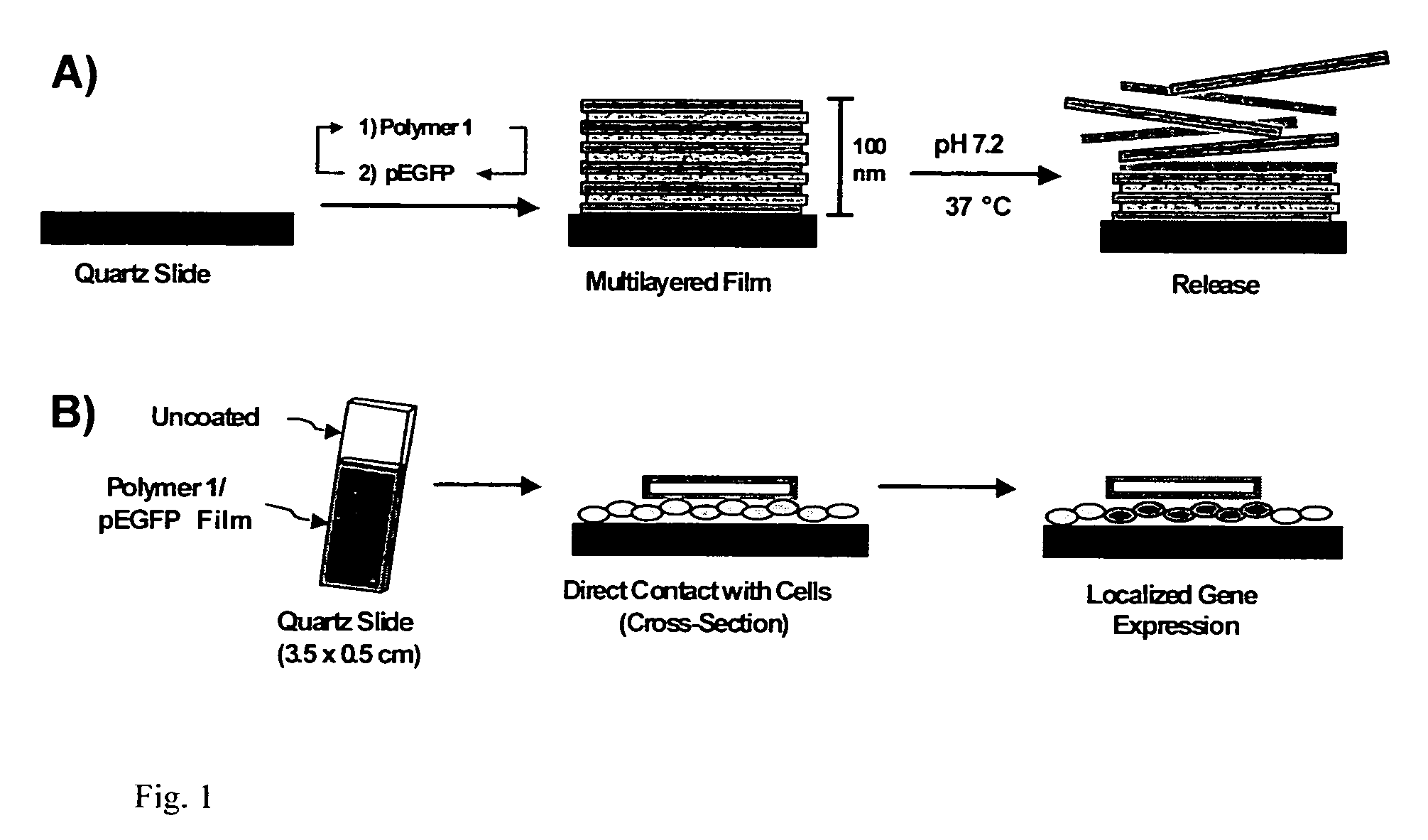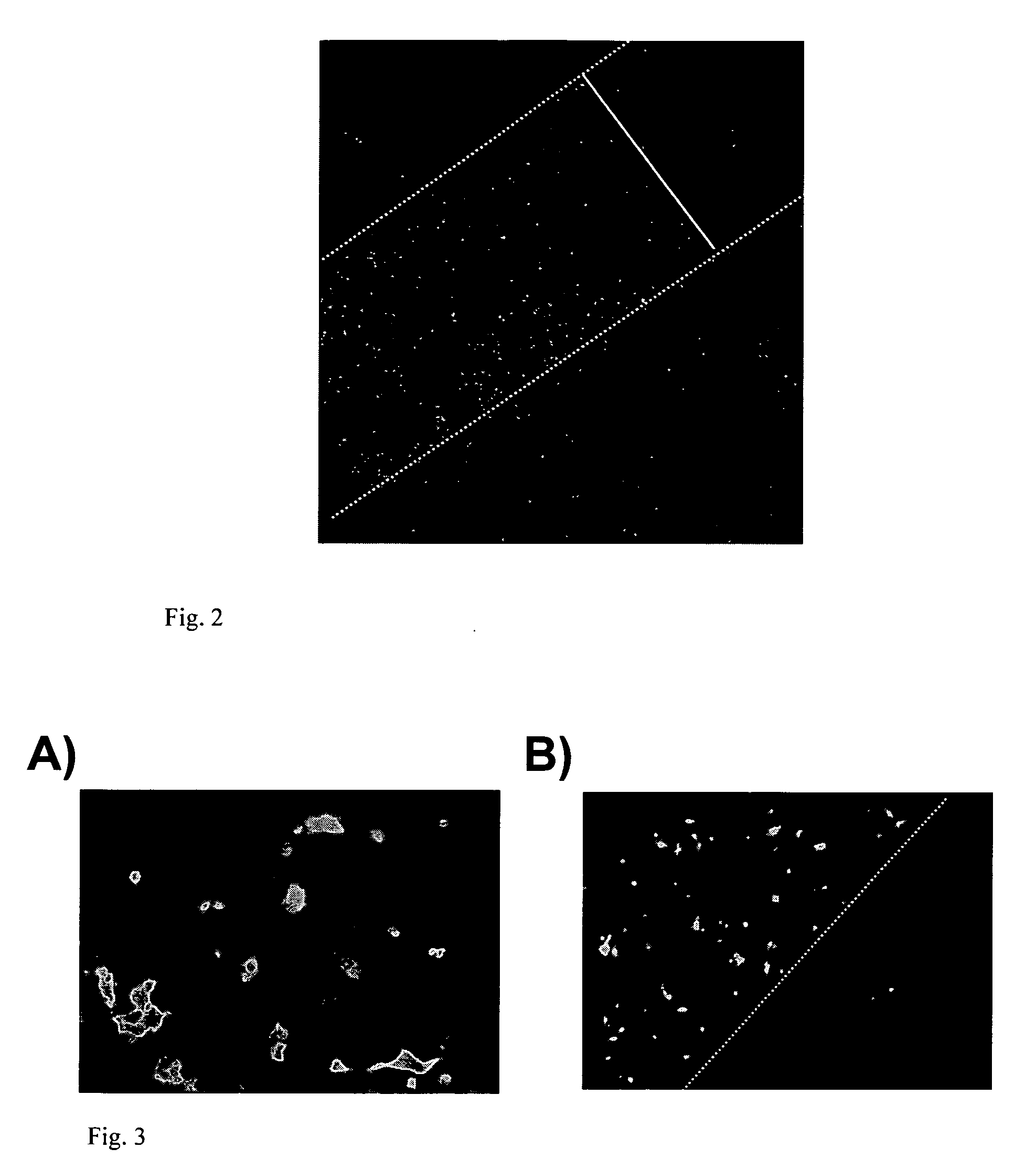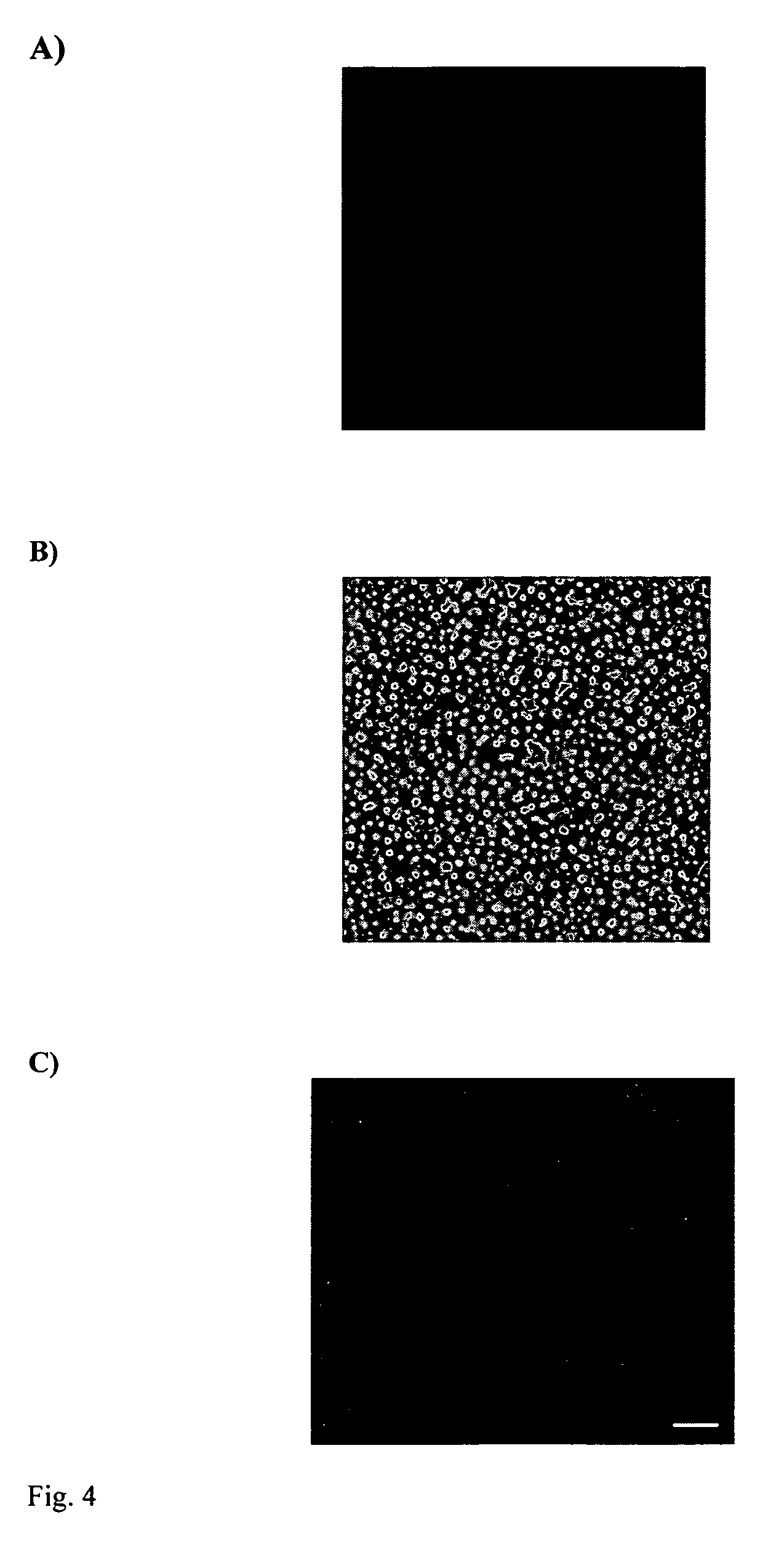Localized delivery of nucleic acid by polyelectrolyte assemblies
a polyelectrolyte and nucleic acid technology, applied in the direction of prosthesis, non-active genetic ingredients, genetic material ingredients, etc., can solve the problems of limited control of dna loading and the spatial distribution of encapsulated dna, and achieve the effect of reducing inflammation and facilitating a certain therapeutic activity
- Summary
- Abstract
- Description
- Claims
- Application Information
AI Technical Summary
Benefits of technology
Problems solved by technology
Method used
Image
Examples
example 1
Multilayered Films Promote the Direct and Localized Delivery of Nucleic Acid to Cells
[0067] A. Materials.
[0068] Linear poly(ethylene imine) (LPEI, MW=25,000) was obtained from Polysciences, Inc. (Warrington, Pa.). Poly(sodium 4-styrenesulfonate) (SPS, MW=70,000) and sodium acetate buffer were purchased from Aldrich Chemical Company (Milwaukee, Wis.). All commercial polyelectrolytes were used as received without further purification. Plasmid DNA [pEGFP-N1 or pDsRed2 (4.7 kb), >95% supercoiled] was obtained from a commercial supplier (Elim Biopharmaceuticals, Inc., San Francisco, Calif.). Polymer 1 (Mn=10,000), shown below, was synthesized as previously described by the inventors (D. M. Lynn, R. Langer, Degradable poly(beta-amino esters): Synthesis, characterization, and self-assembly with plasmid DNA. J Am Chem Soc 2000, 122, 10761-10768).
For experiments requiring fluorescently labeled plasmid, Cy3 Label-IT nucleic acid labeling kits were purchased from Mirus Bio Corporation (Ma...
example 2
Materials and Methods Related to the Coating of Implantable Devices with Multi-Layered Films
[0086] A. Materials
[0087] Poly(sodium 4-styrenesulfonate) (SPS, MW=70,000) and sodium acetate buffer were purchased from Aldrich Chemical Company (Milwaukee, Wis.). Linear poly(ethylene imine) (LPEI, MW=25,000) was obtained from Polysciences, Inc. (Warrington, Pa.). Polymer 1 was prepared as previously reported (See Example 1) and isolated by precipitation into hexane. Clinical grade plasmid DNA [pEGFP-N1 (4.7 kb), >95% supercoiled] was obtained from the Waisman Clinical BioManufacturing Facility at the University of Wisconsin—Madison. Test grade n-type silicon wafers were purchased from Si-Tech, Inc. (Topsfield, Mass.). 316L stainless steel coronary stents and deployment systems were obtained from Cordis (Miami, Fla.). Stents and catheter balloons were provided in sterile packages and had nominal diameters ranging from 2 mm to 5 mm and lengths ranging from 8 mm to 30 mm. Stent and balloon ...
example 3
Fabrication of Erodible Films on the Surfaces of Intravascular Stents
[0100] One attribute of the layer-by-layer procedure used to fabricate multilayered polyelectrolyte films is that this procedure permits the fabrication of ultrathin films that conform to the surfaces of topologically complex objects. In principle, any solid surface that can be wetted by dilute, aqueous solutions of polyelectrolyte can be coated with a homogeneous and conformal multilayered film. The inventors fabricated multilayered films on the surfaces of surgical grade 316L stainless steel intravascular stents using polymer 1, a plasmid construct (pEGFP-N1) encoding EGFP, and an alternate dipping protocol optimized previously for the deposition of polymer 1 / DNA films on planar silicon and quartz substrates as previously described in Example 1. In all cases, stents were precoated with a thin multilayered film (ca. 20 nm thick) composed of sodium poly(styrene sulfonate) (SPS) and linear poly(ethylene imine) (LPE...
PUM
| Property | Measurement | Unit |
|---|---|---|
| Basicity | aaaaa | aaaaa |
| Nucleic acid sequence | aaaaa | aaaaa |
| Biodegradability | aaaaa | aaaaa |
Abstract
Description
Claims
Application Information
 Login to View More
Login to View More - R&D
- Intellectual Property
- Life Sciences
- Materials
- Tech Scout
- Unparalleled Data Quality
- Higher Quality Content
- 60% Fewer Hallucinations
Browse by: Latest US Patents, China's latest patents, Technical Efficacy Thesaurus, Application Domain, Technology Topic, Popular Technical Reports.
© 2025 PatSnap. All rights reserved.Legal|Privacy policy|Modern Slavery Act Transparency Statement|Sitemap|About US| Contact US: help@patsnap.com



